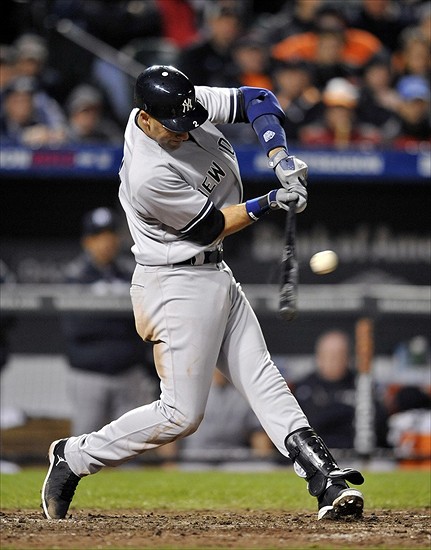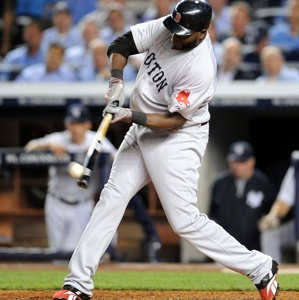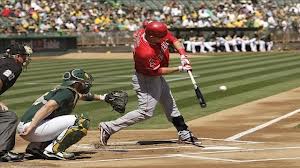
Over the past 18 years, if you have ever watched a game on TV that Derek Jeter was playing in, chances are that you have heard the announcers praise his ability to stay inside the ball. Walk into a training facility or baseball camp, and we’d be willing to bet that you’ll see a drill that is meant to practice the skill of staying inside the ball.
Staying inside the baseball is one the most common things taught by coaches across the land, yet, it is by far, one of the most misunderstood concepts in the game today. More often than not, coaches explain how to stay inside the ball by telling players to hit the inside part of the ball, and/or to try to hit the ball to the opposite field, regardless of where the pitch is located. Only on the outside pitch is this kind of instruction correct, while for anything located on the other two-thirds of the plate, a forced, unnatural, pushing-type of swing is inadvertently being developed, where the result on the field will likely be a lot of lazy fly balls the other way, to go along with quite a few hand-numbing jam shots.
So what does staying inside the baseball REALLY mean?
Truth be told, the skill of staying inside the ball actually has very little to do with the ball itself. Think about this for a second… Unless the batter is getting hit by the pitch, his hands will ALWAYS be inside of the baseball. The idea of staying inside the ball actually is in reference to where the hands are relative the hitter’s body, rather than where they are relative to the ball. To easily understand what exactly that means, we offer a simple two-part demonstration:
PART ONE
Stand up, facing a partner, raise and extend your arms straight out in front, at shoulder height. Palms up or down, in or out, it doesn’t matter. With your arms out, challenge your partner to push them down, and use all of your strength to not allow him to do so. Were you able to keep them out and at the same height without issue? Probably not…
PART TWO
While still standing across from a partner starting with your arms down at your side, lift your hands to create an ‘L’ with your arms, bent at a 90-degree angle, keeping the elbows still alongside the body. Form a fist with each hand, wrists facing one another. Now again, challenge your partner to push your hands down, and again, use everything you’ve got to keep them up. Any better this time around? Did you feel a little stronger or a lot stronger with your hands in this position? We know the answer…
Now that you have felt for yourself how much stronger you are with the hands closer to the body, we can now translate that to the baseball swing, and help you understand what staying inside the ball truly means:
On contact, when the hitter’s arms are bent, hands closer to the body in that strong position, he is staying inside the baseball. Take a look below at four of the best hitters in the game today, and you’ll see four completely different swings, yet very similar looks on contact with regard to where their hands and arms are, in relation to their bodies.
Miguel Cabrera and David Ortiz:


Robinson Cano and Mike Trout:


If on contact, the hitter’s arms are extended, hands further away from the body, then he is not staying inside the ball. The idea of extension of the arms through the ball happens AFTER contact. Below you will see a couple pretty accomplished Major Leaguers getting caught reaching out front, not in that strong hand/arm position as shown previously.
Alex Rodriguez and Bryce Harper:


The best place to start teaching how to properly stay inside the ball is on the tee. One of the greatest benefits of the tee is the fact that the ball can be placed just about anywhere, and we can make sure that we are making contact at the correct points (the further outside, the deeper- or closer to catcher- the ball should be hit), with a fundamentally sound swing that will force hitters to stay inside the ball correctly. From there, move on to front soft toss, where hopefully they will have the feel, from working on the tee, for where they should be making contact with the ball based on the location of the pitch, and eventually, allow all of those good habits created in practice to take over in BP and the game.
Source: https://coachingyourkidsblog.wordpress.com/2013/06/12/staying-inside-the-ball-what-does-it-really-mean/

No comments:
Post a Comment